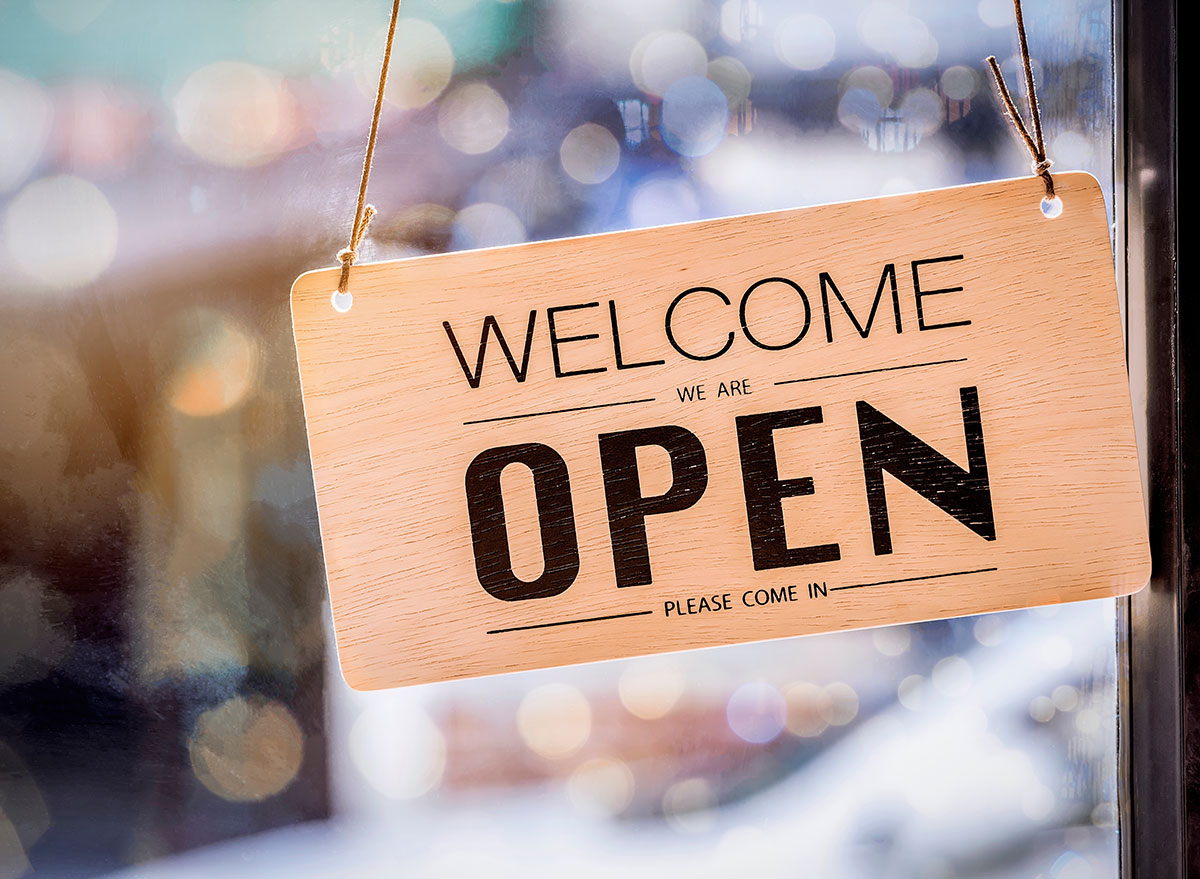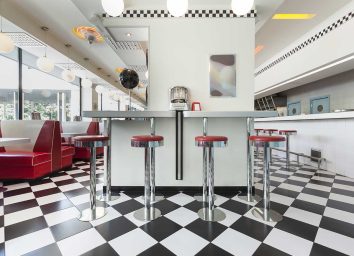The #1 Worst Thing You Can Do at a Reopened Restaurant

After months of being in lockdown, stores, schools, and even restaurants are starting to open again. As exciting as it might be to finally go out for dinner for the first time in forever, it's also important not to let your excitement allow you to let your guard down. COVID-19 is still running rampant through many states, and in plenty of cities, it's actually getting worse. Reopening restaurants, of course, present a number of risks.
However, in the list of risks, you won't find coronavirus being transmitted through food as one of them. As the European Centre for Disease Prevention and Control's chief scientist, Marta Hugas, has stated, "Experiences from previous outbreaks of related coronaviruses, such as severe acute respiratory syndrome coronavirus (SARS-CoV) and Middle East respiratory syndrome coronavirus (MERS-CoV), show that transmission through food consumption did not occur. At the moment, there is no evidence to suggest that coronavirus is any different in this respect."
What's much more concerning as restaurants reopen is something that has nothing to do with what's on the menu: It's the reopening of restaurant's bathrooms.
"There are two concerns with using the restroom," says Leann Poston, M.D., medical expert with Invigor Medical. "COVID on surfaces and whether COVID is aerosolized when you flush the toilet."
She explains that an infected person may touch the counters, sinks, doorknobs, and other surfaces; You touching these same objects and touching your eyes or nose can then potentially lead to you getting infected as well.
Jagdish Khubchandani, PhD, professor of health at Ball State University, adds that as these restaurants are newly reopening, they may be overwhelmed with the many new processes that are now being demanded, and some details could fall through the cracks. (Related: 7 Steps Restaurants are Taking Right Now So You Can Dine Inside.)
"With low staffing, newly reopened restaurants may have a lot to deal with, sporadic customer rush, following all guidelines, maintaining safety and hygiene, etc." he says. "[So] avoid restrooms and be cautious of doorknobs and handles that may not get constant attention from business owners."
But there is a more disgusting risk: "Stool is loaded with bacteria," says Poston. While she acknowledges that it is unclear whether COVID-19 remains infectious in the stool, "Flushing the toilet aerosolizes droplets, but it is currently unclear whether COVID viral particles in aerosolized stool are infectious."
To avoid this, consider wearing a mask. That's the suggestion of Chad Sanborn, M.D., an infectious disease pediatrician at KIDZ Medical Services.
"These are places that a lot of people use, and can often be crowded and busy, so trying to wait until you can use a restroom alone would be advisable," says Sanborn. (Related: 5 Tips for Wearing a Mask in a Restaurant.)
He suggests using toilet paper to flush the toilet and paper towels to turn off faucets and open doors. Also: when it comes to drying your hands, avoid the air dryer where "that flow of air could potentially spread microbes around the room."
Amy Baxter, M.D., an emergency medical doctor and pain management specialist who founded of Pain Care Labs based in Atlanta, Georgia, echoes that the airflow is the aspect of using the bathroom that visitors should be particularly careful of.
"The much bigger risk is the small area and lack of windows to circulate any virus. Wait outside if a stall isn't available," Dr. Baxter said. "Since the virus is much more likely to enter through nasal tissue, try to breathe through your mouth. Better yet, keep a swimmers' nose clip in your pocket—all the better to not have to smell the restroom, too."
Or even better: try and hold it until you get home. For more, check out these other ways you may be attracting germs when you finally venture out to eat, and keep yourself informed by signing up for our newsletter.








